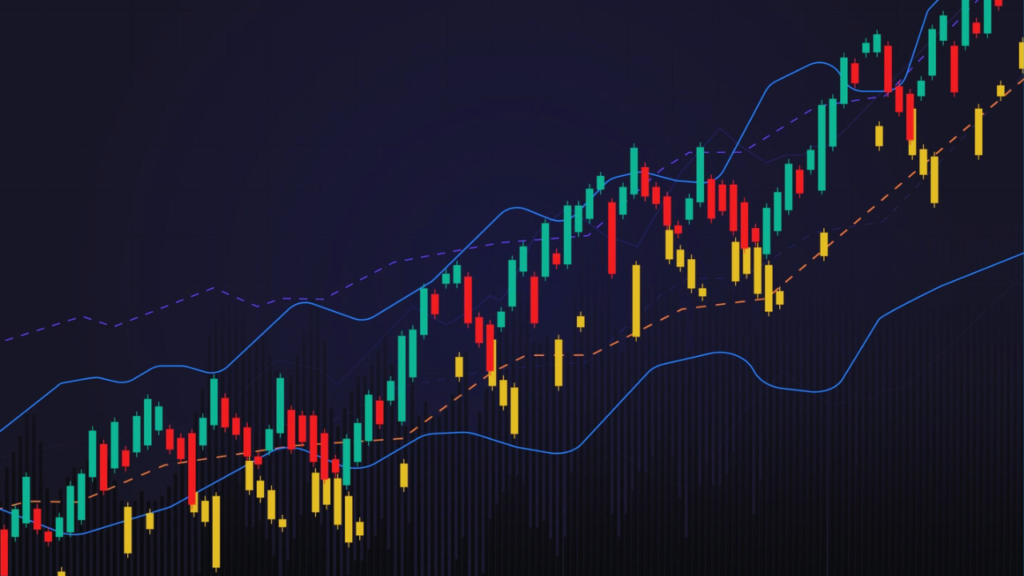TOP 10 TRADING STRATEGIES.Trading in the financial markets is a pursuit that requires a strategic approach to ensure consistent profitability. Various trading strategies exist, each tailored to different market conditions and trader preferences. In this article, we delve into the top 10 trading strategies that have proven effective for traders across the globe. These strategies encompass a range of approaches from short-term tactics to long-term investments, offering valuable insights for traders at any level. View More
1. Day Trading

Definition and Basics
Day trading involves buying and selling financial instruments within the same trading day. This strategy aims to capitalize on small price movements, typically leveraging high volume and volatility in the market.
Key Principles
Market Volatility: Day traders thrive on volatility. Rapid price movements present opportunities to enter and exit trades profitably. Timing the Market: Precision in timing is crucial. Day traders rely on technical analysis and real-time data to make quick decisions.
Pros and Cons
Pros: Potential for quick profits, no overnight risk. Cons: Requires significant time and attention, high transaction costs due to frequent trading.
2. Swing Trading

Definition and Basics
Swing trading focuses on capturing short- to medium-term gains in a stock or other financial instrument over a period of several days to weeks.
Key Principles
Technical Analysis: Swing traders use technical analysis to identify patterns and trends. Market Trends: Understanding market trends is vital. Traders look to capitalize on the “swings” in the market by buying low and selling high.
Pros and Cons
Pros: Less time-intensive than day trading, potential for significant gains. Cons: Exposure to overnight risk, requires a strong grasp of technical analysis.
3. Scalping

Definition and Basics
Scalping is a fast-paced trading strategy that involves making numerous small trades to capture minor price changes throughout the trading day.
Key Principles
Quick Trades: Scalpers make many trades each day, holding positions for only seconds or minutes. Small Profits: The goal is to make a small profit on each trade, which can accumulate over time.
Pros and Cons
Pros: Can be highly profitable with the right skills, minimizes market exposure. Cons: Requires intense focus and discipline, high transaction costs.
4. Position Trading

Definition and Basics
Position trading involves holding a position in a security for a long period, ranging from several months to years. This strategy is more about the big picture than short-term market movements.
Key Principles
Long-term Outlook: Position traders focus on long-term trends and are less concerned with daily fluctuations. Fundamental Analysis: This strategy often relies on fundamental analysis, looking at economic indicators, company performance, and other macroeconomic factors.
Pros and Cons
Pros: Less time-intensive, potential to benefit from long-term trends. Cons: Requires patience, exposure to long-term market risks.
5. Momentum Trading

Definition and Basics
Momentum trading involves buying securities that are rising and selling them when they appear to have peaked. It is based on the idea that stocks that have shown a strong upward trend will continue to rise.
Key Principles
Identifying Momentum: Traders look for stocks that are moving strongly in one direction with high volume. Entry and Exit Points: Correctly timing entries and exits is crucial to capture maximum profit.
Pros and Cons
Pros: Can yield high returns, takes advantage of strong market trends. Cons: Can be risky if the trend reverses, requires constant monitoring.
6. Arbitrage

Definition and Basics
Arbitrage involves buying and selling the same asset in different markets to profit from price discrepancies. This strategy exploits inefficiencies in the market.
Key Principles
Price Discrepancies: Traders look for small price differences between markets. Simultaneous Trades: Trades are executed simultaneously to lock in profits and minimize risk.
Pros and Cons
Pros: Low risk, can be highly profitable with the right opportunities. Cons: Opportunities are often short-lived, requires significant capital.
7. News Trading

Definition and Basics
News trading is based on reacting quickly to news events and economic reports. Traders analyze the potential impact of news on market prices and act swiftly to capitalize on the resulting movements.
Key Principles
Market Reaction: Predicting how the market will react to news is key. Quick Decision Making: Speed is crucial. Traders must make fast decisions to capitalize on news events.
Pros and Cons
Pros: Can result in quick profits, takes advantage of market volatility. Cons: High risk due to unpredictable market reactions, requires constant monitoring of news.
8. Options Trading

Definition and Basics
Options trading involves buying and selling options contracts, which give the right but not the obligation to buy or sell an asset at a predetermined price.
Key Principles
Calls and Puts: Understanding calls (right to buy) and puts (right to sell) is fundamental to options trading. Hedging Strategies: Options can be used to hedge against potential losses in other investments.
Pros and Cons
Pros: Can provide high returns, useful for hedging. Cons: Complex and requires a deep understanding of the market, can be risky if not managed properly.
9. Trend Following

Definition and Basics
Trend following involves identifying and following the direction of market trends. The strategy is based on the belief that prices moving in one direction will continue to do so.
Key Principles
Identifying Trends: Traders use various tools and indicators to identify upward or downward trends. Riding the Trend: Once a trend is identified, traders aim to ride it until it shows signs of reversal.
Pros and Cons
Pros: Simple strategy to understand and implement, can be highly profitable in trending markets. Cons: Can lead to significant losses in choppy or sideways markets, requires discipline to stick to the strategy.
10. Contrarian Trading

Definition and Basics
Contrarian trading involves going against the prevailing market trends. This strategy is based on the belief that the market often overreacts to news and events.
Key Principles
Market Sentiment: Contrarian traders look for extreme market sentiment, where most traders are heavily buying or selling. Reversing Trends: The goal is to enter trades in the opposite direction of the current trend, anticipating a market correction.
Pros and Cons
Pros: Can yield high returns when market corrections occur, often leads to buying low and selling high. Cons: High risk if the market continues in the same direction, requires a deep understanding of market psychology.
Conclusion
In conclusion, trading in the financial markets requires a well-thought-out strategy to navigate the complexities and volatility. Each trading strategy has its own set of principles, advantages, and challenges. By understanding these top 10 trading strategies, traders can better position themselves to achieve their financial goals. Whether you are a beginner or an experienced trader, selecting the right strategy that aligns with your trading style and risk tolerance is crucial for success.







